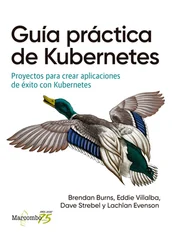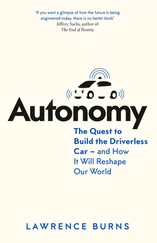Sometimes it was hard to tell what Whittaker meant by his stories. Peterson interpreted this one as a challenge. Were you going to go about your life just getting by? Or were you the type who was going to go out and give your best effort to do something awesome?
Realizing that his course would require more work than they were prepared to give, some people dropped Whittaker’s class. The ones who remained essentially dropped every other one of their classes and just worked for him. Peterson was one of the ones who remained. He gave up his social life, as well as communicating with his family. He even gave up sleeping. Several months in, he became so sleep-deprived that he fainted. The problem was that he was going down a set of stairs when he did. He hit his head, was taken to the hospital to be assessed—and was back working on the project within a few days.
Empowering inexperienced and sleep-deprived graduate students who were totally committed to the project’s success could create some unusual situations. One morning, Whittaker and Urmson arrived to check in on the students and volunteers and were met with the results of one of these hyper-caffeinated work sessions: Their treasured Humvee no longer had a roof. Working through the night, one of the student team members had decided that the Humvee’s interior didn’t have enough room to store the batteries and computers and actuators that the self-driving equipment would require. So he went and got a Sawzall and cut through each one of the Humvee’s roof pillars, essentially decapitating the vehicle.
This was the sort of initiative that would typically have been applauded by Whittaker. Except the impromptu roof amputation wasn’t really necessary. Even if the equipment couldn’t fit in the Humvee’s cab, they could have ripped out some seats, or mounted additional equipment on the Humvee’s roof. Removing it made the vehicle illegal to drive on public roads. From then on, whenever they wanted to take the Humvee to the sort of wide-open space where they could test it, they would have to tow the vehicle—an ignoble start for a robot that was supposed to drive itself.
To provide the Humvee with the ability to drive itself, Red Team essentially reverse-engineered the sensory tools humans use to help them drive. The vehicle needed, for example, eyes to see—and so the Red Team procured several types of LIDAR (Light Detection and Ranging) devices. The LIDAR’s job was to shoot out beams of light and sense when the beams bounced back. Precisely calculating the timing of the beams’ return allowed the LIDAR to determine how close the sensor was to the object that the light beam bounced against. Repeated thousands of times per second, the LIDAR could create a rudimentary picture of the world outside the vehicle.
The main LIDAR sensor would allow the robot to detect obstacles seventy-five meters ahead. Three supplemental LIDAR devices scanned a wider field of view within twenty-five meters of the robot’s front end. A stereo-vision processing system represented a different way to use light to detect objects, employing a pair of cameras. But the cameras and LIDAR might have trouble penetrating the dust clouds that could arise on sandy desert roads. To provide a sense of the world in dusty conditions, Red Team also bought a radar system that used sound to detect obstacles.
To control the vehicle’s direction and speed, Red Team wouldn’t be able to use a foot on the gas pedal or a hand on the steering wheel. Actuators would take their place. Essentially, these were electric motors that twisted, pushed or pulled—to make the vehicle accelerate, brake or turn left or right.
Sitting in the center of all that was a series of computers, the robot’s brain. Donated by Intel, one was a quad-processor Itanium 2 server that featured three gigabytes of RAM. Some of the computers were intended to combine the information provided by the LIDAR, the stereo-vision system and the radar sensor to create a model of the world. Another computer employed GPS data and motion-tracking tools to locate the robot in the world within a single meter of accuracy. Now that it had a conception of its surroundings and knew its location, the robot’s computer system would have just two questions to answer. Two questions that humans asked themselves, thousands of times a trip: How fast should I be going? And where should I be steering?

Whittaker scheduled one hundred days to actually get the robot assembled and the software built. The deadline fell in November, but as Thanksgiving approached, significant portions of the vehicle remained unfinished. The computers weren’t wired together, for example. Nor were the sensors mounted. The robot did have a name, though: Sandstorm, after the dust clouds the vehicle would kick up in the Mojave.
Whittaker and Urmson both worried a lot about the Mojave Desert. They worried about the off-road conditions of the course, and the effects of the Mojave’s rutted roads on their sensitive sensors and microprocessors. Driven over even at moderate speed, the Mojave Desert’s rocks and ridges were bound to create vibrations that the students believed had the potential to damage the computer’s memory. After all, your basic disk drive is just a magnetic metal plate that spins really quickly. They’re encoded by a precise bit of metal that hovers just above the plate. Extreme shocks could see the metal stick gouging chunks from the spinning plate and damaging the drive. Those same bumps could create false readings from the sensors.
Consequently, Red Team spent a lot of time determining how to insulate the computers and sensors from the jars and bumps that would happen as the Humvee drove across the desert. The solution, they decided, was to protect the equipment the same way automobile manufacturers insulated humans from bumps and jars. With springs and shock absorbers, which were fitted to an enormous metal box where the Humvee’s roof used to be. Dubbed the “e-box,” for electronics box, the 1,200-pound container didn’t just contain hard drives. It also encompassed much of the robot’s most sensitive equipment—the computers, the GPS system, the radar as well as the supplementary LIDAR units.
The main LIDAR and the stereo-vision device still remained sensitive to the pitches and rolls that could strike the robot as it navigated the off-road trail. So the team spent untold hours engineering a device based on old nautical gimbals, complex series of interconnected arms and pivots that kept a ship’s compass stable in even the heaviest of seas. Part of the Red Team designed and built their own gimbal, mounting inside it the main LIDAR and the stereo-vision system, and protecting it all in a sphere a little larger than a classroom globe. Little motors in the gimbal allowed Sandstorm to direct the LIDAR and camera wherever it needed to sense the world. Heading into what its onboard map told it was a leftward curve, the LIDAR would “look” to the left so that it could see the world in the direction of the world to come.
As technical director, Urmson was the one in charge of putting all these pieces together. He felt enormous pressure both at home and on the Red Team. That September, his wife had just had the couple’s first child, a baby boy. But Urmson couldn’t spend much time at home. He had made a promise to Whittaker that the robot would drive itself the entire length of the race, 150 miles, by midnight on December 10, 2003—three months before race date.
To meet that deadline he was working sixteen-hour days, seven days a week; during one furious round of assembly Urmson didn’t sleep for forty hours. The week before Thanksgiving, Whittaker added to the pressure. “This vehicle hasn’t rolled so much as a foot under its own control,” he said during one meeting with Urmson and other key team members, according to the journalist Wayt Gibbs. “You have promised to get 150 miles on that beast in two weeks … Anyone who thinks it is not appropriate for us to go for 150 miles by December 10, raise your hand.” Silence. Not a single person elevated an arm. Whittaker smiled, according to Gibbs, and made an observation in his characteristically florid language: “We’re now heading into that violent and wretched time of birthing this machine and launching it on its maiden voyage.”
Читать дальше













